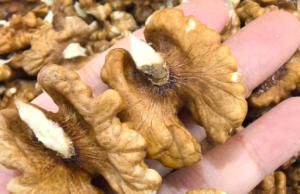The pancreas is a small organ located between the spine and intestines that produces enzymes to help digest food and hormones like insulin, which help regulate blood sugar.
Pancreatic ᴄᴀɴᴄᴇʀ occurs when healthy cells in the pancreas stop working properly and grow out of control, forming a tumor.
Because the pancreas is deep inside the body, pancreatic ᴄᴀɴᴄᴇʀ is not easy to detect. The disease often grows or spreads undetected, with few warning signs. Unfortunately, pancreatic ᴄᴀɴᴄᴇʀ is often not found until it has spread outside of the pancreas to nearby organs.
It’s important to know the symptoms of pancreatic ᴄᴀɴᴄᴇʀ and, if they do occur, to take them seriously. Symptoms of pancreatic ᴄᴀɴᴄᴇʀ that you should not ignore include:

1. Yellow skin and itchiness on skin
You likely associate jaundice with liver disease, but the yellowing of skin can also be a sign of pancreatic ᴄᴀɴᴄᴇʀ.
It is also due to the buildup of bile in the body from organ damage, which causes waste products and fats to accumulate and turn your skin yellow.
The white of the eyes may also become yellow or you may notice areas on your skin that are itching and yellowish.
Jaundice should always be taken seriously.
2. Depression
Depression is far from an isolated mental health condition.
Unless you have a history of anxiety, depression, or mental health issues in general, a sudden bout of depression brought on by fatigue, weight loss, or pain should be checked immediately.
3. Nausea or vomiting
With how quickly this ᴄᴀɴᴄᴇʀ spreads, it can begin to affect other organs throughout the body, too.
This can result in sick organs that cause blockages, making it difficult for food to properly travel through your digestive system.
This may lead to vomiting or nauseousness, or can cause you to feel stomach pain when eating.
4. Stomach and back pain
If your pancreas is developing an illness, the area surrounding it will begin to feel in pain almost constantly.
The area beneath the breastbone may feel a dull ache that might spread up to the sides, stomach, or back as the pancreas starts to press against nerves and other organs in its vicinity.
It’s important to note the difference between everyday pain and one that is more serious.
5. Bloating
Many individuals deal with bloating somewhat regularly, but there’s a point where it becomes a cause for concern.
Pancreatic ᴄᴀɴᴄᴇʀ bloats can cause your stomach to be distended, so you almost appear pregnant even on an empty stomach or first thing in the morning.
Bloating can be a sign of many other dangerous conditions, so make sure to discern the difference between what’s normal and what isn’t.
6. Sudden weight loss
As aforementioned, the organ damage caused by pancreatic ᴄᴀɴᴄᴇʀ can cause your digestive system to be unable to transport food around the body.
This will cause you to lose weight, even if you haven’t changed your eating habits at all.
If you notice unexplained weight loss – or a random loss of appetite for no reason – it may be cause for concern.
7. Discolored stools or urine
Due to the organ damage sustained from pancreatic ᴄᴀɴᴄᴇʀ, a buildup of bile will occur in the body that causes changes in urine and also in bowel movements.
Those with pancreatic ᴄᴀɴᴄᴇʀ may have a dark tea-colored urine or clay-colored, greasy stools.
Your excretions reveal a lot about your health so be sure to monitor them for changes, even if it is a bit gross.
8. Blood clots
A blood clot isn’t exactly uncommon.
Those who sit too long in less than ideal positions can develop clots in the leg known as deep vein thrombosis (DVT).
Pancreatic ᴄᴀɴᴄᴇʀ adds to the risk of blood clots forming.
Blood clots aren’t always caused by ᴄᴀɴᴄᴇʀ but if you have them often, a doctor’s visit is a good idea.
References: relayhero.com, eehealth.org















